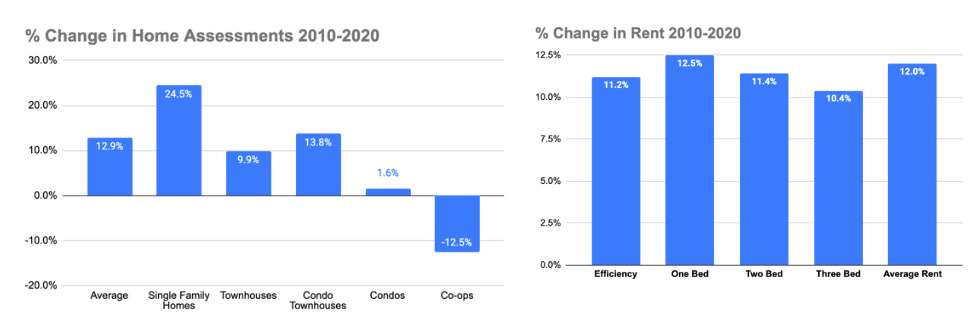 What’s Next with Nicole is a biweekly opinion column. The views expressed are solely the author’s.
What’s Next with Nicole is a biweekly opinion column. The views expressed are solely the author’s.
Get ready for a data dump. Arlington’s 2020 Profile was recently released and it is full of eye opening statistics.
Overall Arlington is a young, multi-family building community, with prices that continue to soar, as we continue to lose racial diversity. We are also very eco-friendly in our transportation and an incredibly healthy county that is supported by vast community resources.
This might not sound surprising but the data points paint a stark picture. For your own visualization, reference the 2020 Arlington Profile, and for comparative purposes that you will see throughout this article, the 2010 Arlington Profile.
Population Demographics
Our population has the highest percentage of prime working age adults in the United States. 54% of our population is between the ages of 25-54. It is no wonder that employers are flocking to Arlington since of those prime working age adults, 75% have a bachelor’s degree or above.
Our workforce is also getting paid for their skills. Arlington’s median household income is $117,374, compared to $102,180 in the DC Metro Region.
The jurisdiction that Arlingtonians are most likely to work is Washington DC, while people that work in Arlington are likely to live in Fairfax County. We have increased our employment by 27,000 employees in the past ten years and continue to have a significantly smaller unemployment rate than the surrounding DC Metro Area.
Our growth and success in many ways has been to the detriment of racial diversity in the county. Our population is 4% more white, 3% less hispanic, and 1% less black than in 2010.
Housing
In the 2020 Arlington Profile, 71% of our homes were in either an apartment or condo. 60% of our housing stock is rented. When accounting for the dollar’s purchasing power, average rent increased by 12% since 2010, while condominium unit assessments increased by just 1.6%Half of Arlington’s residents live in Metro corridors or Columbia Pike, and take up just 22% of the county’s residential land area.
Single family homes and townhouses make up less than 30% of the housing stock in Arlington. Of those housing types, 83.3% are owned and populate 78% of our residential land area. Single family home assessments have increased by 25% while condo style townhomes have increased by 14%, attached townhouses have increased by 9%, and co-ops have decreased by 12.5%.
Over the last ten years we have added 16,317 multi-family homes, while losing 3,895 townhomes and 449 single family homes. On a Condo Owner and Renters Coalition call, Housing Staff indicated 90% of net new homes built in the past 10 years have been apartments and 10% condos.
When looking at these striking numbers I dug into representation. How Arlington typically sorts our communities is into civic association neighborhoods when determining how much of a say they have in many issues.
As an example, the Crystal City Civic Association represents just under 8,000 households. Its largest building, Crystal House, has 1,647 homes. If you add up the homes represented by the civic associations of Riverwood (57), Rivercrest (125), Gulf Branch (176), Arlingwood (106), Chain Bridge Forest (107), Forest Glen (88), and Glebewood (222), these seven single family household civic associations represent the same amount of people as about half of the people in one building in one civic association of a multi-family building heavy area.
As we continue to grow in our corridors, it is important that we make an effort to ensure multi-family buildings are fairly represented in our decision making process.
Transportation
Arlingtonians are much more likely than average to take an environmentally friendly commute to work. In Arlington, only 39% of residents drive alone to work, compared to 76% nationally. 40% take public transit, 8% bike/walk, and 4% taxi/rideshare or carpool.
Metro ridership also continues to go down at a startling rate. Even prior to COVID-19, Metro use is down 14% in the past ten years in Arlington. Meanwhile, ART bus ridership has doubled. Of our public transportation uses, bus ridership still only represents ¼ of users while metro represents ¾.
Conclusion
Data informed discussions are necessary in our policy decisions. Take a few minutes to study this document and understand the ten-thousand foot view of who we are. It is easy to be stuck in our own bubble, but when coming to a community conversation I hope everyone is able to understand the bigger picture of how they fit into the discussion by using this data.
Nicole Merlene is an Arlington native and former candidate for Virginia State Senate. She has served as a leader in the community on the boards of the Arlington County Civic Federation and North Rosslyn Civic Association, as an Arlington Economic Development commissioner, in neighborhood transportation planning groups, and as a civic liaison to the Rosslyn Business Improvement District.



